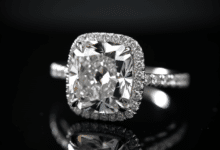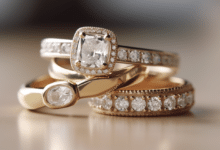5 Critical Steps for Cushion Cut Diamond Ring Repairs

It’s that heart-stopping moment when you realize your cherished cushion cut diamond ring is damaged. Whether it’s a beloved family heirloom or a symbol of your eternal love, the prospect of repairing a damaged diamond can be daunting. But fear not, for there are expert solutions to restore the glory of your precious gemstone. In this comprehensive guide, we’ll unveil the critical steps to ensure your cushion cut diamond ring receives the care it deserves, preserving its brilliance for generations to come.
1. Immediate Action: Secure and Protect
The moment you notice damage to your cushion cut diamond ring, it’s crucial to act swiftly. Secure the loose or damaged components to prevent further loss or harm. This simple step can save you from heartbreak and costly replacements.
- Gently remove the ring from your finger and place it in a secure container or pouch.
- Avoid touching or handling the damaged area to prevent further damage or loss of the gemstone.
- Seek professional assistance as soon as possible, as delaying the repair process can exacerbate the damage.
2. Expert Assessment: Diagnosis and Evaluation
Once you’ve secured the ring, it’s time to seek the expertise of a trusted jeweler or gemologist. These professionals possess the knowledge and specialized equipment necessary to accurately diagnose the extent of the damage and provide tailored repair solutions.
- Look for a reputable jeweler with extensive experience in cushion cut diamond repairs.
- Provide a detailed account of how the damage occurred to aid in the assessment process.
- Request a comprehensive evaluation, including an examination under a microscope, to identify any underlying issues.
3. Repair Options: Customized Solutions for Your Cushion Cut Diamond
Based on the expert assessment, your jeweler will present you with tailored repair options to restore the beauty and integrity of your cushion cut diamond ring. These solutions may vary depending on the extent and nature of the damage.
- Re-tipping: If the damage is confined to the diamond’s culet (bottom tip), a skilled jeweler can re-tip the diamond, preserving its original weight and brilliance.
- Recut and polish: In cases of more extensive damage, such as chips or fractures, the diamond may need to be recut and polished to regain its sparkle and symmetry.
- Replacement: In severe cases where the damage is irreparable, your jeweler may recommend replacing the cushion cut diamond with a new, high-quality stone.
4. Advanced Techniques: Leveraging Cutting-Edge Technology
In the realm of cushion cut diamond repairs, traditional techniques are often combined with cutting-edge technology to achieve exceptional results. Reputable jewelers invest in state-of-the-art equipment and training to ensure your diamond receives the highest level of care.
- Laser technology: Precise laser systems can be used for intricate repairs, such as removing chips or fractures, without compromising the diamond’s integrity.
- Computer-aided design (CAD): Advanced CAD software allows jewelers to create virtual models and simulations, ensuring accurate and precise repairs.
- Specialized tools: Jewelers utilize specialized tools and equipment, such as microscopes and diamond-tipped tools, to handle delicate repairs with precision.
5. Preventative Measures: Ensuring Long-Lasting Beauty
Once your cushion cut diamond ring has been expertly repaired, it’s essential to take preventative measures to protect your investment and ensure its enduring beauty. By following these simple guidelines, you can minimize the risk of future damage and enjoy your cherished diamond for years to come.
- Routine inspections: Schedule regular checkups with your jeweler to identify any potential issues before they escalate.
- Proper care and cleaning: Follow recommended care and cleaning procedures to maintain the brilliance and integrity of your diamond.
- Insurance coverage: Consider investing in a comprehensive jewelry insurance policy to protect your cushion cut diamond ring against loss, theft, or damage.
Navigating the journey of cushion cut diamond ring repairs can be daunting, but with the right expertise and commitment to excellence, your precious gemstone can regain its former glory. By following these critical steps, you can rest assured that your cherished diamond will continue to sparkle and captivate, embodying the timeless beauty and emotional significance it holds.












